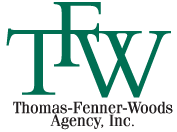The past is gone. Poof. No mas! The challenge is that most of us are deeply rooted in the past and find a great deal of comfort in it – whether it was good or bad. We hear ourselves saying to both loved ones and people in the workplace, “When I was young…”
It’s frightening to go through today’s rapid change. As Buckminister Fuller stated, we’re going through a period of “accelerating acceleration” in which things are happening faster and faster — at a faster rate. Today’s rate of change is generating a significant amount of dislocation, uncertainty, and fear — and that doesn’t feel good.
For the first time in generations, we’re looking to those younger than us for advice — primarily in technology. We’re living in a technological age. It’s not just about production and information, but how technology affects every aspect of our lives.
What are you or your company doing to drive past this fear of change? Have you set out to learn from younger workers? Have you invited them to educate and enlighten you on today’s technologies? Will you and your company embrace the need for this invitation or will lose out to competitors who do?
Change makes us uncertain about what we can contribute and how this contribution can create job security and personal growth. If we can’t do things the “old school” way, then what are we going to do? For example, many employees somehow feel affronted when their company decides to offshore everything, from data management to customer service. What’s left for us to do?
How do we drive past this fear? How do we choose not to play victim to the great change? Fundamentalist religion has blossomed worldwide as one answer. In a sense, we’ve decided to prohibit change. I’ve seen bosses and employees take a fundamentalist view about their work too, doing everything they can to block, sabotage, and resist change. The problem is that when we look backward hoping for a sense of security, we can turn into pillars of salt. Although we might not die physically, we’ve surrendered in our minds. Now all you have to look forward to is retirement — and it can’t come fast enough.
I remember speaking to a top executive at a billion-dollar organization about an opportunity in her business. Her entire conversation was about the lack of support she received from other corporate departments and the retirement she’s looking forward to with her husband. When I asked, “what’s your edge?” she didn’t have one. I can tell you that her department will be going in only one direction — and it’s not one that will please shareholders.
It’s very difficult to break up a relationship with another person, especially when this person is the “former me.” The past provides a false sense of strength in the familiar.
I was speaking with a 63-year-old human resource executive who was laid off from a major corporation and then hired by one of my business partners to help implement our program. This man called our customer support service because he didn’t know how to download and open a Word document. Two days later, he called me to ask a question he could have easily found the answer to on the HRThatWorks web site. When I began to try to show him where he could get the information, he cut me off and told me that he didn’t “like all this new technology” and wasn’t very interested in using it. He actually asked me if I could send him a three-ring binder with the materials from the web site!
The role of Wisdom within all of this change is to understand and communicate what is continuous or cyclical. For example, long-term investors warned novice dot-com and real estate investors about the rule that cuts across investing: “If it’s too good to be true, it probably is.” If these novices listened to the wisdom of the Warren Buffets, they wouldn’t be in a financial mess today. We need to listen to the wisdom that things will always change. Then we have to project our will firmly into the future. We must be open and invite new ideas. We have only begun our life’s story — and many exciting chapters lie ahead.
Here are some steps you can take to reach this goal:
- Identify those things that you wish could have remained the same. You might wish there were no cell phones or electric cars, then recognize the past is over with, give it its proper funeral, and run like heck to embrace what has replaced it.
- Invite an Innovation and Wisdom Dialogue among your workforce. What timeless lessons and cutting-edge technologies can be shared? How can we allow the people in our organization whose strength is wisdom to utilize this ability? How do we empower those whose strength is technology to make full use of those abilities?
- Realize that if you don’t embrace change, you will — or should be — be let go. I’ve seen too many employers face paralysis in letting employees go because they were once productive in the old way of doing things.
We need to force the hand of change. You can create your own game plan for embracing change and moving forward, have your managers do it for you, or start planning an early and unfulfilling retirement. The choice is yours!





